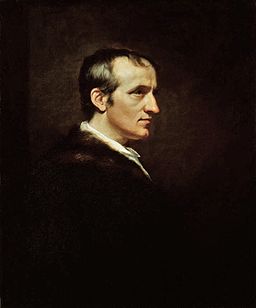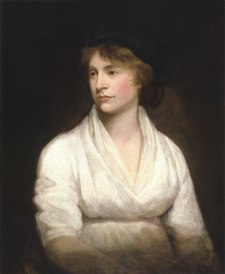The article was written as part of The FrankenPod’s continuing exploration of Frankenstein, or The Modern Day Prometheus, and it’s author Mary Shelley.

William Godwin
Born March 3, 1756
Died April 7, 1836
‘This light was lent to me for a very short period, and is now extinguished for ever!’
William Godwin’s memoir of Mary Wollstonecraft, 1798
There is a reason that the rebellious authors, poets and thinker of the Shelley circle were drawn to Mary Shelley’s Dad. William Godwin was considered quite the radical with views of individuals and self-moderation that advocated a kind of communalism or anarchy. He was a prolific writer, who wrote often anonymously to journals, newspapers and magazines providing a dissenting voice in the face of the Prime Ministerial governance of William Pitt the younger. These ideas intrigued and enthralled many of the creatives of the romantic movement who often pushed against societal norms and were themselves a dissenting voice.
I know very little about political systems, so if you can help me to understand this a little better please get in touch!
He believed that an overreaching governing body would inevitably turn tyrannous (this is all sounding a bit liberation at this point, maybe I’m explaining it poorly) and that small self-governing communities would be able to serve the best interests of the individual (a little less libertarian perhaps). He believed in the inherent good in mankind, but that the honesty and integrity of a person were systematically corrupted by social constructs.
Wollstonecraft and Godwin had a very intense relationship which started about a year before they married. It seems as though when Wollstonecraft fell pregnant with Mary Godwin who would later be Mary Shelley, William Godwin thought it necessary for them to marry, when they did Wollstonecraft was about three months pregnant. She died from complications after the birth. Godwin was devastated, they had been together less than two years. He set about publishing her remaining works and writing her biography.
Here is his preface from “Posthumous Works of the Author of A Vindication of the Rights of Woman”, it makes me cry every damn time I read it:
The public are here presented with the last literary attempt of an author, whose fame has been uncommonly extensive, and whose talents have probably been most admired, by the persons by whom talents are estimated with the greatest accuracy and discrimination. There are few, to whom her writings could in any case have given pleasure, that would have wished that this fragment should have been suppressed, because it is a fragment. There is a sentiment, very dear to minds of taste and imagination, that finds a melancholy delight in contemplating these unfinished productions of genius, these sketches of what, if they had been filled up in a manner adequate to the writer’s conception, would perhaps have given a new impulse to the manners of a world.
The purpose and structure of the following work, had long formed a favourite subject of meditation with its author, and she judged them capable of producing an important effect. The composition had been in progress for a period of twelve months. She was anxious to do justice to her conception, and recommenced and revised the manuscript several different times. So much of it as is here given to the public, she was far from considering as finished, and, in a letter to a friend directly written on this subject, she says, “I am perfectly aware that some of the incidents ought to be transposed, and heightened by more harmonious shading; and I wished in some degree to avail myself of criticism, before I began to adjust my events into a story, the outline of which I had sketched in my mind.” The only friends to whom the author communicated her manuscript, were Mr. Dyson, the translator of the Sorcerer, and the present editor; and it was impossible for the most inexperienced author to display a stronger desire of profiting by the censures and sentiments that might be suggested.
In revising these sheets for the press, it was necessary for the editor, in some places, to connect the more finished parts with the pages of an older copy, and a line or two in addition sometimes appeared requisite for that purpose. Wherever such a liberty has been taken, the additional phrases will be found inclosed in brackets; it being the editor’s most earnest desire, to intrude nothing of himself into the work, but to give to the public the words, as well as ideas, of the real author.
What follows in the ensuing pages, is not a preface regularly drawn out by the author, but merely hints for a preface, which, though never filled up in the manner the writer intended, appeared to be worth preserving.
W. GODWIN.
Notable Works Published:
History of the Life of William Pitt, Earl of Chatham (1783)
An Enquiry Concerning Political Justice, and Its Influence on General Virtue and Happiness (1793)
Things as They Are; or, The Adventures of Caleb Williams (1794)
The Enquirer (1797)
Of Population (1820)
Thoughts on Man: His Nature, Production, and Discoveries (1831)


 This article was written as part of
This article was written as part of